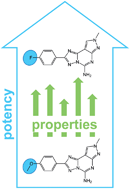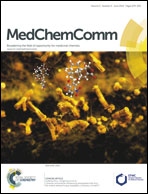Specific chemical changes leading to consistent potency increases in structurally diverse active compounds
Abstract
Chemical changes leading to potency increases in structurally diverse specifically active compounds were systematically explored. The analysis was facilitated through the application of the matched molecular pair formalism. From compounds with high-confidence activity data for more than 600 targets, ∼225 000 chemical transformations were isolated and analyzed. A set of 31 transformations was identified that occurred with high frequency in many different compound series and led to consistent target-specific potency increases, regardless of the structural contexts in which they occurred. The majority of these transformations represented simple and intuitive R-group replacements. These chemical modifications changed selected ADMET-relevant compound properties in different ways. For practical applications, this set of transformations can be further expanded by relaxing the stringent selection criteria applied herein. We make all transformation source data freely available for such applications. For example, preferred R-group replacements can be considered as target-specific modifications when exploring a new compound series.


 Please wait while we load your content...
Please wait while we load your content...